The print bed, also known as the build plate, is one of the most important components of any fused deposition modeling (FDM) 3D printer. Your printer can’t just lay out melted filament on any surface, and a poor-quality build plate (or no build plate at all) will likely lead to print failure.
The primary function of a print bed is to provide a flat and smooth surface for the bottom (first) layer to stick to during the print. For this to happen, the print bed needs to form a temporary bond with the first layer of extruded filament so the model doesn’t move mid-print and cause an issue.
Today, there are many options for 3D printer build plates, all with different features, sizes, and other characteristics. It’s also important to mention that some print beds are better for printing certain materials than others. For example, while one print bed might work great with a PLA filament, if you’re printing polycarbonate or ABS, you may experience better results on another type of build plate.
In this article, we’ll go over how you can pick the best print bed by listing a few of the best build plate options on the market. Before we get into the options, though, we’ll first review some characteristics of a build plate that you should consider when choosing which print bed is for you. Enjoy!
Considerations
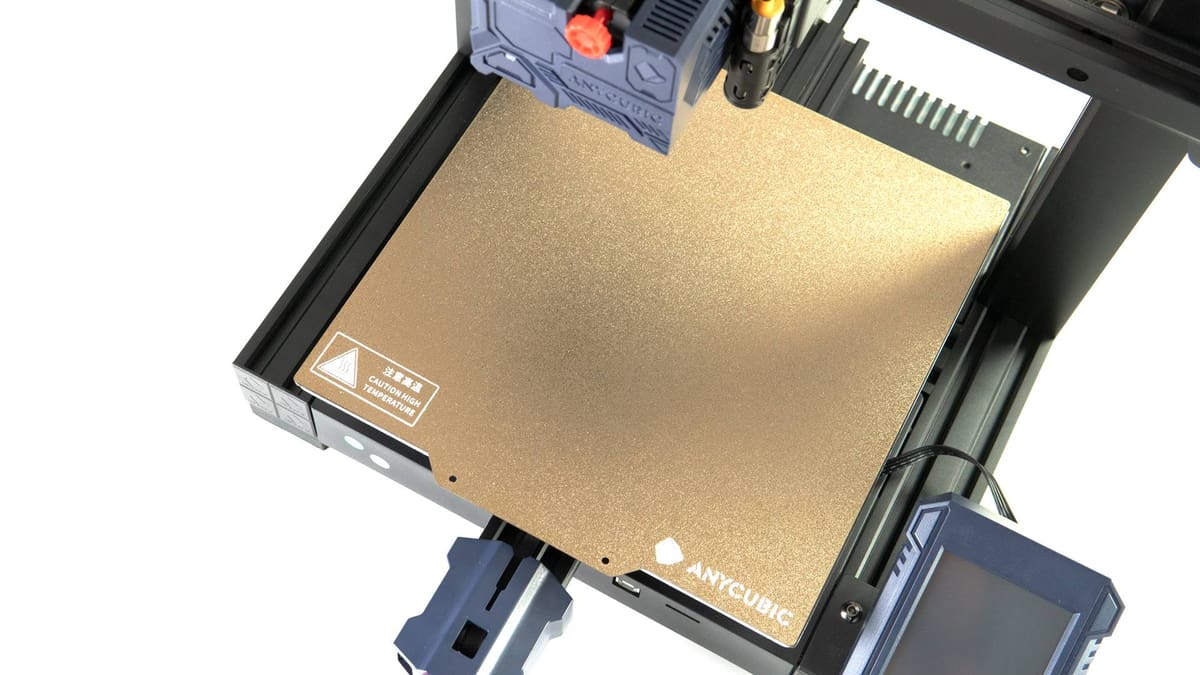
There are a few factors to consider when choosing a print bed. In this section, we’ll go over them to ensure you pick the right build plate for you, your printer, and your filament.
The most important factor of a print bed is the surface material, which is the top-most coating on the bed – this usually controls which filament materials work on the build plate. For most print beds, the surface material is the same across the entire print bed, such as with a glass bed. However, build plates such as spring steel PEI sheets use a sticker or special coating of one material for the top layer and another material for the rest of the bed.
On a similar note, perhaps the second most important feature of a print bed is the base material of the build plate. While this material doesn’t affect the bed’s first layer adherence as well as the top layer material, it determines the bed’s features. Going back to our example of a spring steel PEI bed, the spring steel doesn’t affect how well filament sticks to the surface, but it makes the bed flexible, durable, and magnetic.
While traditional build plates require clips to keep the bed in place, magnetic print surfaces will stick to the print bed itself, allowing for easy removal once the print is finished. Note that magnetic build plates tend to have a lower maximum heat threshold than non-magnetic varieties to prevent the degradation of their magnetic properties, often limiting their material compatibility.
Lastly, you can consider other special features of the bed because these can affect the performance and user experience of the product. The abovementioned magnetism, flexibility, a double-sided coating, and strength can all make a build plate better. The unique features of a build plate are usually a product of the material the build plate is made out of, but not always.
Now that you know what to look for in a print bed, let’s get to the best options!
Glass

Up first is glass, the stock type of build plate on many budget 3D printers, like the Ender 3 V2, and a very low-cost option. You can’t just take off your room’s windows and print on them, though. Most glass 3D printing surfaces are actually tempered glass, including Carborundum coating, which is a strengthened and more heat-resistant version of regular glass that prevents the sheet from deforming during printing.
Glass build plates usually can come in two styles: smooth or textured. The former yields a smoother bottom layer on prints, but textured glass beds, due to their nuanced rises and dips, make part removal easier because prints will naturally pop off when the bed cools.
Glass printer beds are known for their excellent adhesion – when properly cleaned. They’re a great choice for just about any standard material, with good adhesion for PLA, PETG, TPU, ABS, ASA, and even nylons. When printing with PETG, you’ll need to create a protective layer between the print and your print bed to prevent the material from damaging the glass and destroying the build plate. Glue stick, hairspray, or similar adhesive aids are recommended.
You’ll also have to use bed clips to secure your glass bed to your printer since it’s not magnetic or not otherwise pre-glued. Nonetheless, the low price point, wide availability, and decent adhesive properties of glass beds make this print bed a great option.
- Features: Low cost, parts pop off when the bed cools, works great for PLA, produces smooth bottom finish on prints
- Compatible materials: PLA, ABS, PETG, TPU, nylon
- Examples: Creality, MatterHackers
- Price range: $20-$50
Spring Steel Smooth PEI
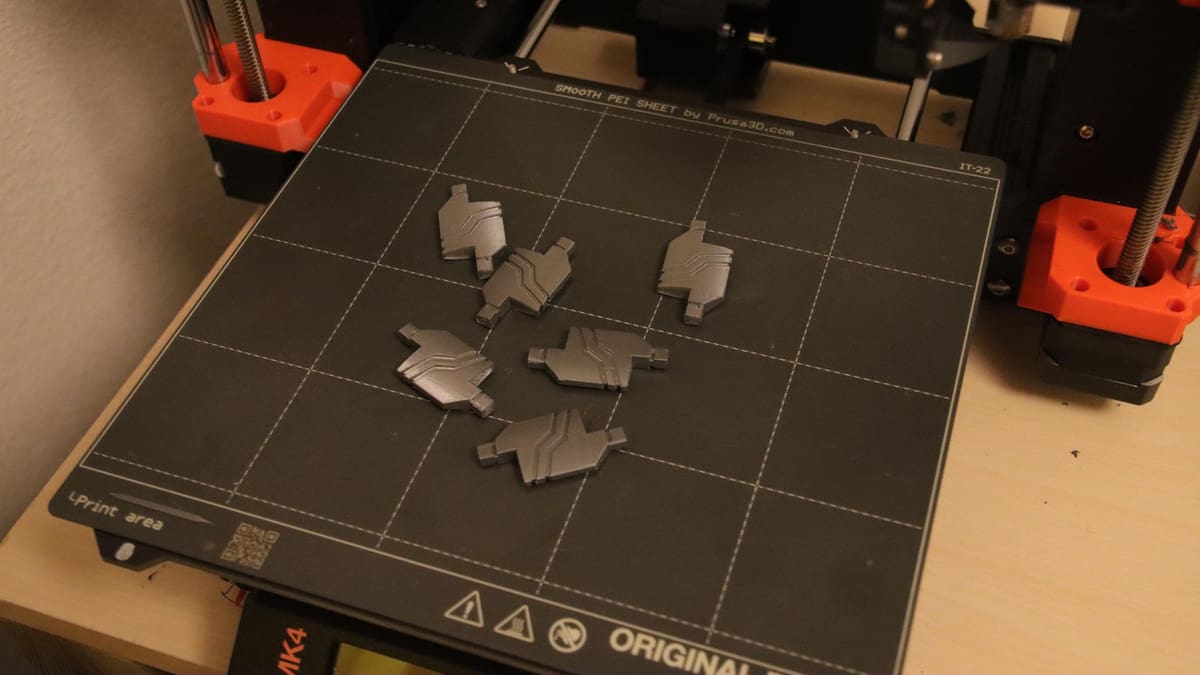
Second, spring steel smooth PEI is a more recently popular build plate, which has been featured on stock versions of the Prusa i3 MK3S+. This type of build plate is coated in PEI and primarily made of spring steel, which is a flexible steel material that’s also ferromagnetic, allowing you to easily remove and reattach the bed to a printer with a magnetic bed surface. The flexible aspect of the bed comes in handy for removing prints because you can bend the surface to pop prints off and the steel will bend back.
While spring steel is a great base material for a build plate, it’s not as valuable as an adhesive layer, which is why the top surface layer of this type of build plate is a smooth sheet of Polyetherimide. Commonly known by the acronym PEI, this thermoplastic material is well-known for providing excellent adhesion for many 3D printing filaments without extra adhesive on top.
The smooth variation of PEI yields a shiny finish on the bottom layer of prints, but it can also make removing the part difficult (if prints stick too well to the smooth area). Also, the smoothness of the bed means you have to fine-tune your Z offset to ensure that the first layer comes out well.
Smooth PEI provides excellent adhesion, especially for parts that require a small contact point to the build surface. This makes it compatible with a wide range of materials, including PLA, PETG, TPU, ABS, ASA, and some engineering-grade materials. Similarly to glass build plates, you’ll want to make sure you have a protective layer of adhesive applied before printing PETG or TPU, as these materials can stick too well to this surface and potentially damage it without a release layer added.
Spring Steel Textured PEI

Similar to the previous option, spring steel textured PEI build plates also use a spring steel base, meaning this bed is flexible and magnetic for easy part removal and bed attachment. However, this build plate option differs from the previous one because it uses a textured PEI surface rather than a smooth PEI coating.
A textured PEI surface means that there are small hills and valleys across the surface. As you might expect, the variations across the bed are reflected on the bottom of printed models, but this type of bed offers a few important benefits.
Mainly, textured PEI beds make part removal easier because prints will stick to less surface area than on a smooth PEI sheet, and the dips and highs of the bed will force prints to pop off once the bed cools. You also have more wiggle room when it comes to adjusting the Z offset because not every point of the bed is the same height. While it’s a little more expensive than other types of build plates such as glass, spring steel textured PEI beds have many features that could justify your purchase.
Textured PEI is very similar to smooth PEI in its material compatibility, while purposely reducing adhesion with its textured surface for a straightforward release of printed parts. You’ll find similar performance with PLA, PETG, and ABS, ASA, while TPU should be a little easier to handle as it won’t stick to the build surface quite as excessively.
- Features: Flexible for easy part removal, magnetic for easy bed attachment, great adhesion for most materials, more wiggle room for Z offset
- Compatible materials: PLA, ABS, PETG, TPU, nylon
- Examples: Prusa, Geeetech
- Price range: $20-$40
Special Texture Plates
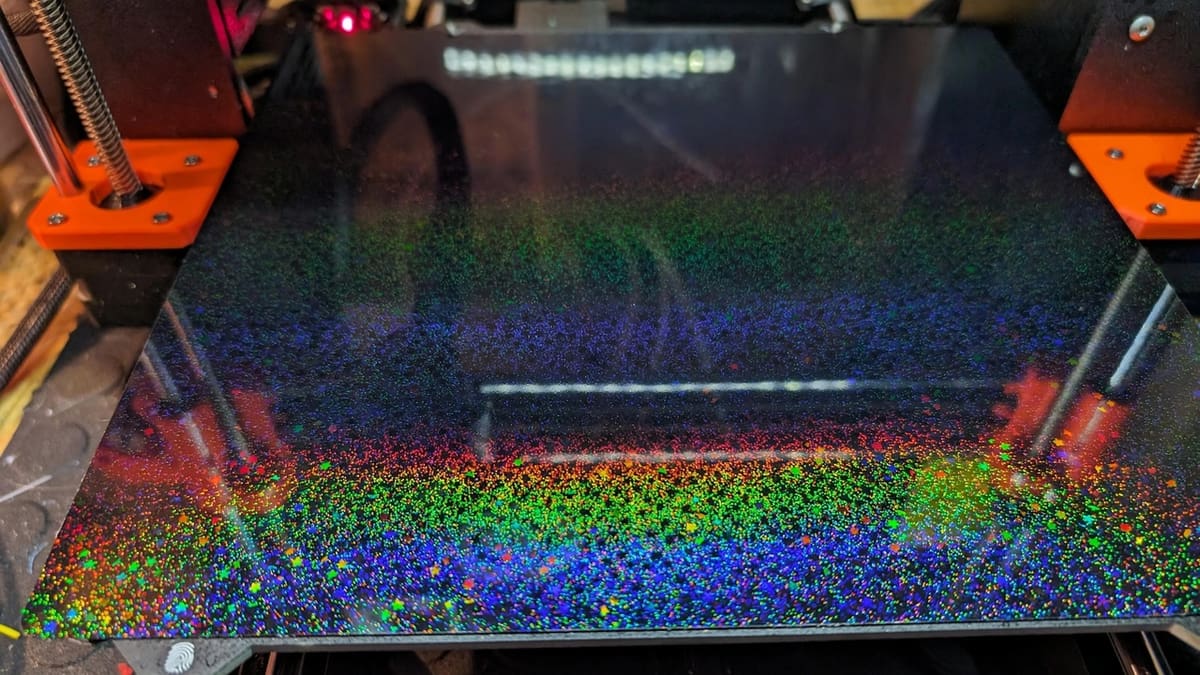
If you’re looking to add a bit of personality to each of your prints, special texture plates, also known as PEY build plates, are the way to go. These often use spring-steel sheets as a base, with a micro-patterned film applied to the surface that imparts unique and often shiny designs on the bottoms of your prints, such as a carbon-fiber texture, a twinkling star pattern, or a holographic finish.
Many PEY build plates use polypropylene for the actual surface, as this provides a good baseline adhesion. Additional adhesive aids aren’t recommended, as they will get in the way of the texture attaching to your prints and can lead to adverse bed adhesion.
It’s important to note that PEY build plates are considered consumables, as they are much less durable than your average build plate. The textured film will begin to lift over time and any scratches from the nozzle or part removal equipment will begin to show on the bottom of your prints as well. To make the most out of these build plates, shift around the spot where your models are printed to keep them from using the same spot over and over again. This will prolong the life of the print surface, but it won’t prevent it from needing to be replaced after hours and hours of print time.
Most PEY build plates are compatible with PLA, PETG, and TPU, as these materials adhere well to polypropylene without requiring adhesion aids. Materials that require a higher temperature build plate aren’t recommended, given that prolonged exposure to these required temperatures can shorten the lifespan of the textured film on the build surface.
- Features: Flexible, magnetic, good enough adhesion with standard materials, creates patterns on the bottom surface of prints
- Compatible materials: PLA, PETG, TPU
- Examples: Bambu Lab
- Price range: $15-$30
G10
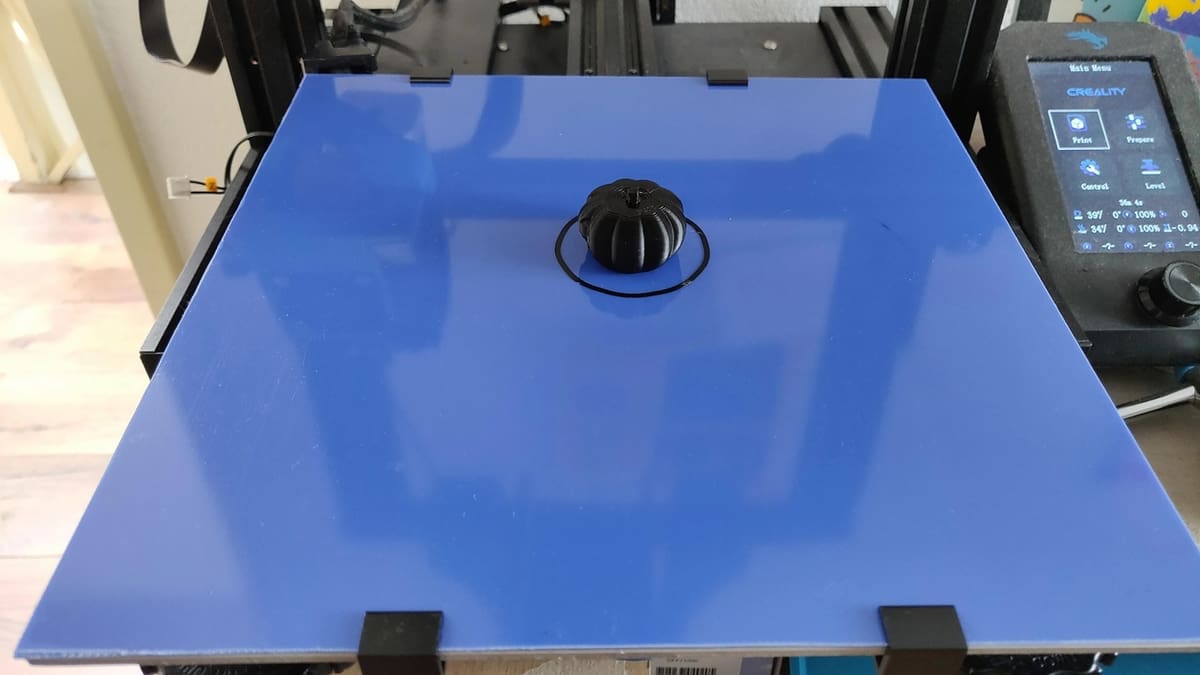
G10 is a lesser-known bed material that some users, such as Maker’s Muse on YouTube, are very passionate about. Also known as Garolite or FR4, G10 is a special type of plastic that’s very similar to carbon fiber in some of its physical properties, but at a fraction of the cost. In fact, G10 is perhaps the least expensive build plate option on this list, costing only a little over $10 for a 12 x 12-inch sheet.
Furthermore, G10 is rigid and very durable, so you won’t have to worry about accidentally breaking the surface. G10 offers great performance when working with your typical material types, including PLA, PETG, TPU, and ABS, ASA. Because of its durable nature, G10 is a good choice for filaments that could potentially damage alternative print beds, such as PC, nylon, and abrasive materials. This makes it a great all-around choice for your print surface.
- Features: Very inexpensive, durable, provides consistent and reliable bed adhesion
- Compatible materials: PLA, ABS, ASA, PET, PETG, TPU, nylon
- Examples: Garolite, USA Sealing Inc.
- Price range: $10-$20
Polypropylene

Another plastic bed material that’s worth taking a look at is polypropylene. Polypropylene, sometimes abbreviated as PP, is a translucent plastic that’s pretty inexpensive as a build plate, costing only around $20 for a 235 x 235-mm surface. Especially when sold as a thin sheet, polypropylene build plates are semi-flexible, meaning you should be able to bend them a little to remove prints.
Build plates made from this plastic material are also temperature resistant and can be used with bed temperatures as high as 120 °C. And because plastic bonds strongly to other plastics, polypropylene is a great printing surface option for most 3D printable materials, such as PLA, ABS, PETG, TPU, nylon, and even polypropylene (because you can also 3D print this material). You will want to steer clear of abrasive materials when using this build surface, as they can easily damage it and cause deformities in any future prints.
Unfortunately, polypropylene beds are known to scratch easily, and any defects to the bed are likely to be shown on the bottom of prints. On a similar note, some users have experienced warping and other deformations to the bed, which is a natural occurrence for plastics when they’re repeatedly heated and cooled. If this happens, you’ll probably have to purchase a new bed to ensure that your print bed doesn’t change height throughout a print, risking a failed print.
- Features: High-temperature resistance, semi-flexible for easy part removal, inexpensive
- Compatible materials: PLA, ABS, PETG, PC, TPU, nylon, polypropylene
- Examples: MatterHackers’ LayerLock, Mamorubot, HT1
- Price range: $20-$30
Adhesive Aids
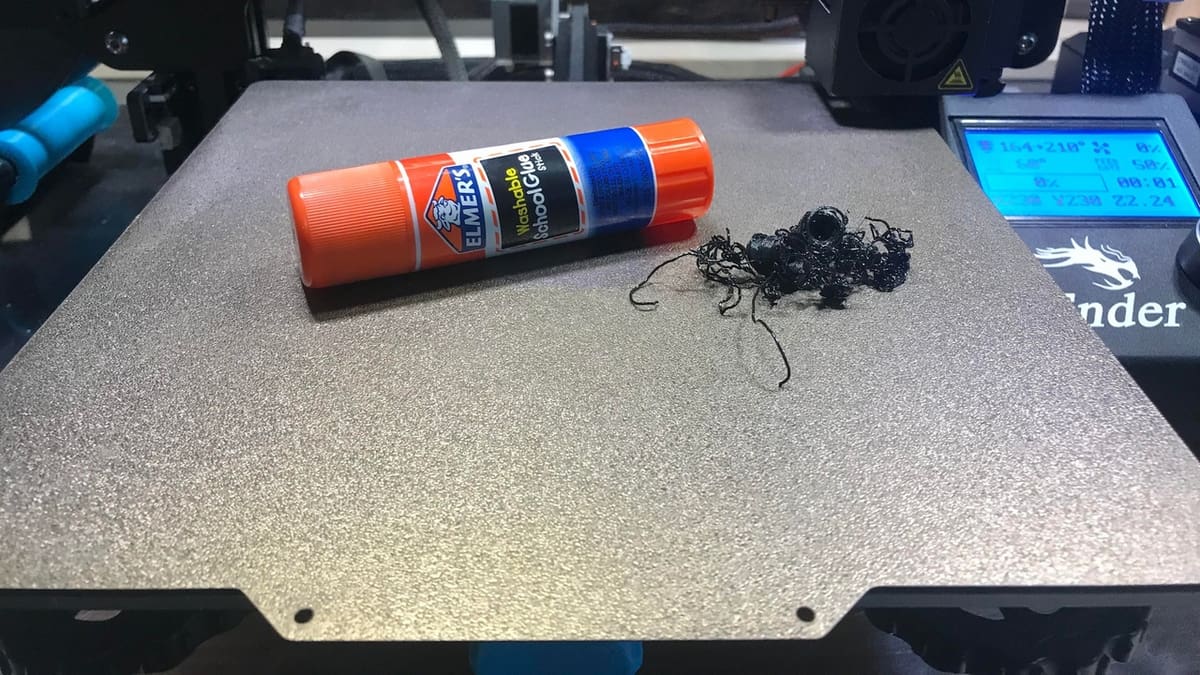
Even if you have a great build plate, you might need to use an adhesive aid to ensure that the first layer of prints sticks well to your print bed. Using an extra adhesive is often seen as a bad thing and an indicator that your build plate isn’t good, but this isn’t the case. Your printer might just need a little extra help to prevent warping or becoming unstuck.
In this section, we’ll briefly cover a few excellent adhesive aids that you can use on top of your print bed surface. As for adding these adhesives to your print surface, we suggest only applying a small amount of whatever agent you’re using to lightly coat the top of the print bed. Now, let’s get to the options!
- Kapton tape: Though it’s often used as a print surface on top of another print bed, Kapton tape is technically an adhesive aid. However, because it’s tape, Kapton is more of a replacement adhesive for a print bed than an aid. It goes over the top of an existing build surface and acts as an adhesive aid. It’s heat resistant – up to 280 °C – and has excellent adhesion to PLA and ABS, along with other common printing materials. While the application process can be time-consuming, especially when compared to alternative adhesive aids, Kapton tape is an inexpensive option that practically replaces the surface of your print bed, saving you the costs of purchasing a new print bed.
- Glue: Glue is probably the most popular adhesive aid and is a widely available lightly sticky substance that can be added to basically any surface. Glue isn’t a super-strong adhesive, but it gets the job done for most materials, such as PLA and ABS. It’s worth mentioning that you should clean your print bed frequently, though. If you use glue too often, an extremely undesirable residue can build up.
- Painter’s tape: Painter’s tape is another tape option that can be applied like a sticker to an existing print bed. This type of tape, meant for keeping painters from accidentally painting clean walls, is available at basically any hardware store and does a great job of helping prints to stay down.
- Hairspray: While it’s probably not the first type of adhesive you’d think of using, hairspray works great as an adhesive aid on existing print beds. Hairspray is semi-adhesive, and most hairsprays work. Like with glue, you’ll have to clean it from your print bed if you use it too much. Also, as hairspray is flammable, make sure to be careful with this adhesive aid.
License: The text of "3D Printer Bed: How to Choose Your Build Plate/Surface" by All3DP is licensed under a Creative Commons Attribution 4.0 International License.


